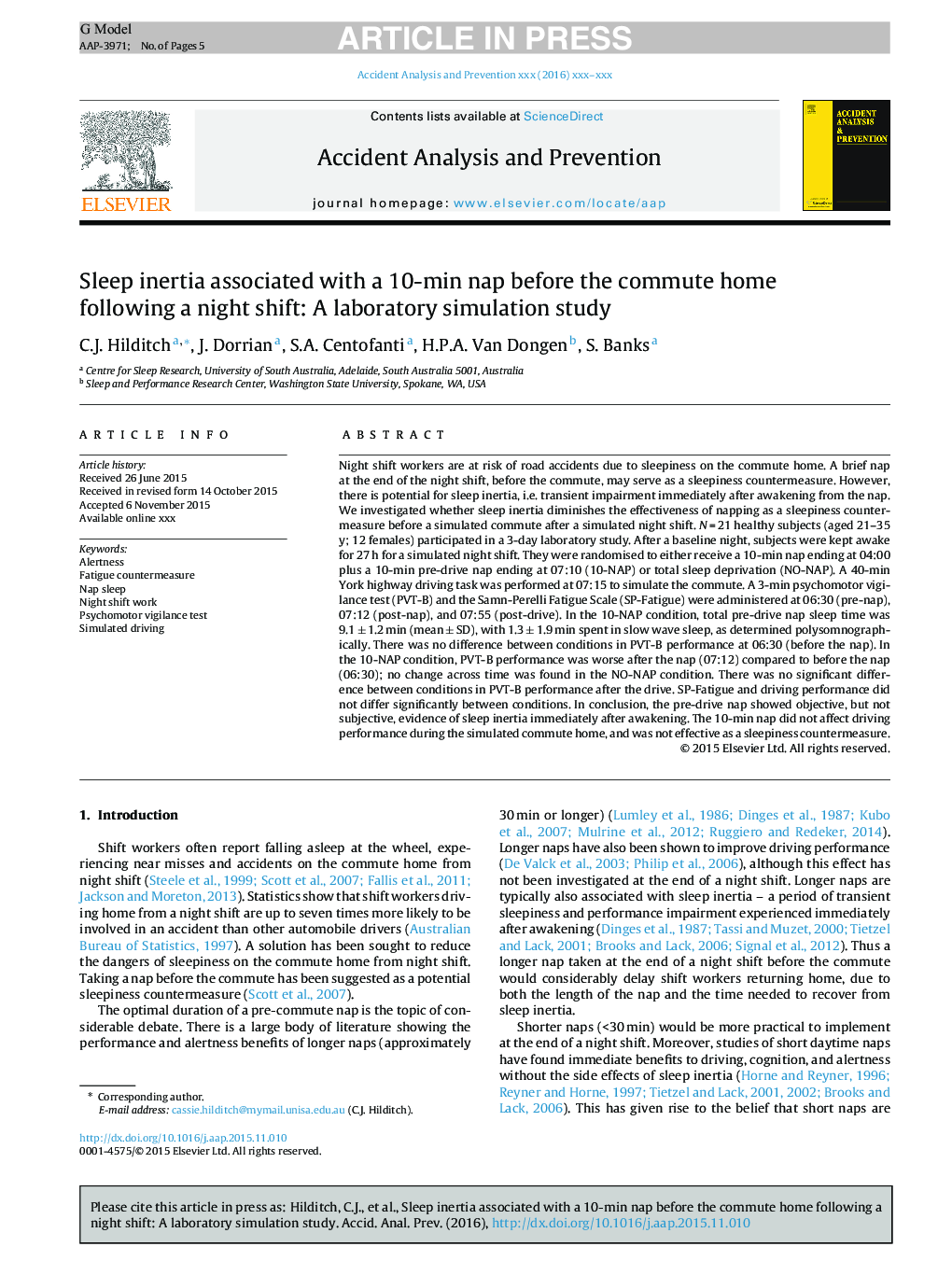| کد مقاله | کد نشریه | سال انتشار | مقاله انگلیسی | نسخه تمام متن |
|---|---|---|---|---|
| 4978767 | 1367780 | 2017 | 5 صفحه PDF | دانلود رایگان |
عنوان انگلیسی مقاله ISI
Sleep inertia associated with a 10-min nap before the commute home following a night shift: A laboratory simulation study
ترجمه فارسی عنوان
اینرسی در حالت خواب با 10 دقیقه خواب قبل از خانه رفت و آمد پس از یک تغییر شبانه: یک مطالعه شبیه سازی آزمایشگاهی
دانلود مقاله + سفارش ترجمه
دانلود مقاله ISI انگلیسی
رایگان برای ایرانیان
کلمات کلیدی
هوشیاری، مقابله با خستگی، خوابیدن ناف، کار شبانه، آزمون هوشی روان شناختی، شبیه سازی رانندگی،
موضوعات مرتبط
مهندسی و علوم پایه
مهندسی شیمی
بهداشت و امنیت شیمی
چکیده انگلیسی
Night shift workers are at risk of road accidents due to sleepiness on the commute home. A brief nap at the end of the night shift, before the commute, may serve as a sleepiness countermeasure. However, there is potential for sleep inertia, i.e. transient impairment immediately after awakening from the nap. We investigated whether sleep inertia diminishes the effectiveness of napping as a sleepiness countermeasure before a simulated commute after a simulated night shift. N = 21 healthy subjects (aged 21-35 y; 12 females) participated in a 3-day laboratory study. After a baseline night, subjects were kept awake for 27 h for a simulated night shift. They were randomised to either receive a 10-min nap ending at 04:00 plus a 10-min pre-drive nap ending at 07:10 (10-NAP) or total sleep deprivation (NO-NAP). A 40-min York highway driving task was performed at 07:15 to simulate the commute. A 3-min psychomotor vigilance test (PVT-B) and the Samn-Perelli Fatigue Scale (SP-Fatigue) were administered at 06:30 (pre-nap), 07:12 (post-nap), and 07:55 (post-drive). In the 10-NAP condition, total pre-drive nap sleep time was 9.1 ± 1.2 min (mean ± SD), with 1.3 ± 1.9 min spent in slow wave sleep, as determined polysomnographically. There was no difference between conditions in PVT-B performance at 06:30 (before the nap). In the 10-NAP condition, PVT-B performance was worse after the nap (07:12) compared to before the nap (06:30); no change across time was found in the NO-NAP condition. There was no significant difference between conditions in PVT-B performance after the drive. SP-Fatigue and driving performance did not differ significantly between conditions. In conclusion, the pre-drive nap showed objective, but not subjective, evidence of sleep inertia immediately after awakening. The 10-min nap did not affect driving performance during the simulated commute home, and was not effective as a sleepiness countermeasure.
ناشر
Database: Elsevier - ScienceDirect (ساینس دایرکت)
Journal: Accident Analysis & Prevention - Volume 99, Part B, February 2017, Pages 411-415
Journal: Accident Analysis & Prevention - Volume 99, Part B, February 2017, Pages 411-415
نویسندگان
Cassie J. Hilditch, Jillian Dorrian, Stephanie A. Centofanti, Hans P. Van Dongen, Siobhan Banks,
